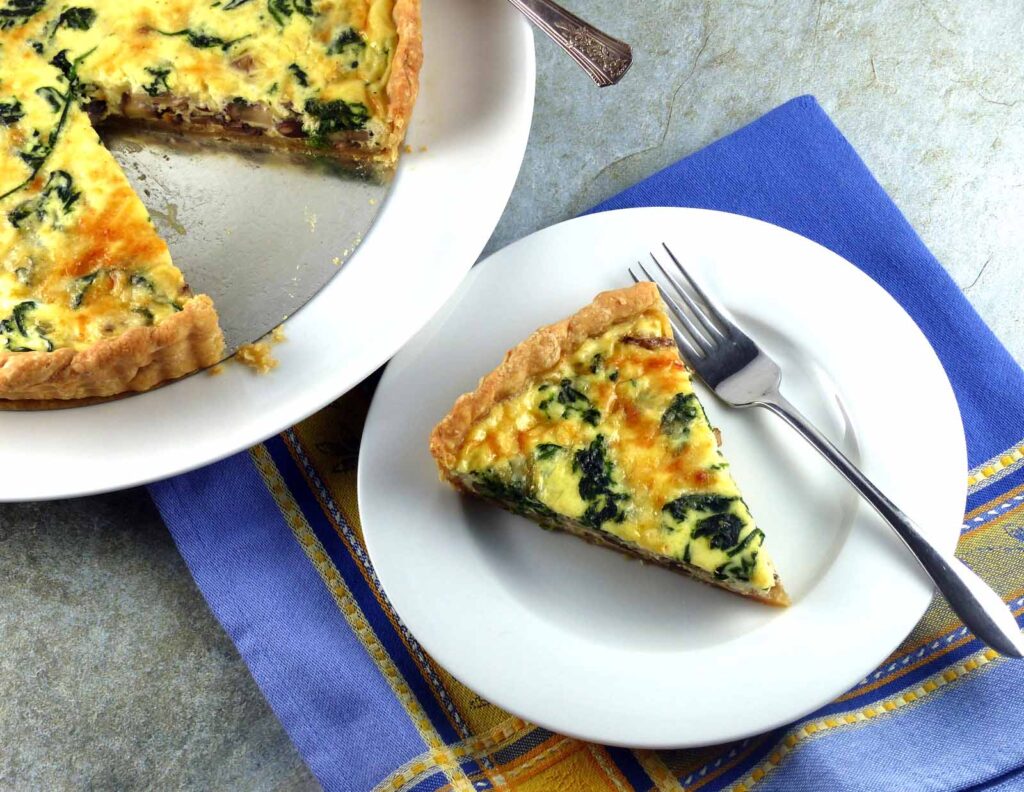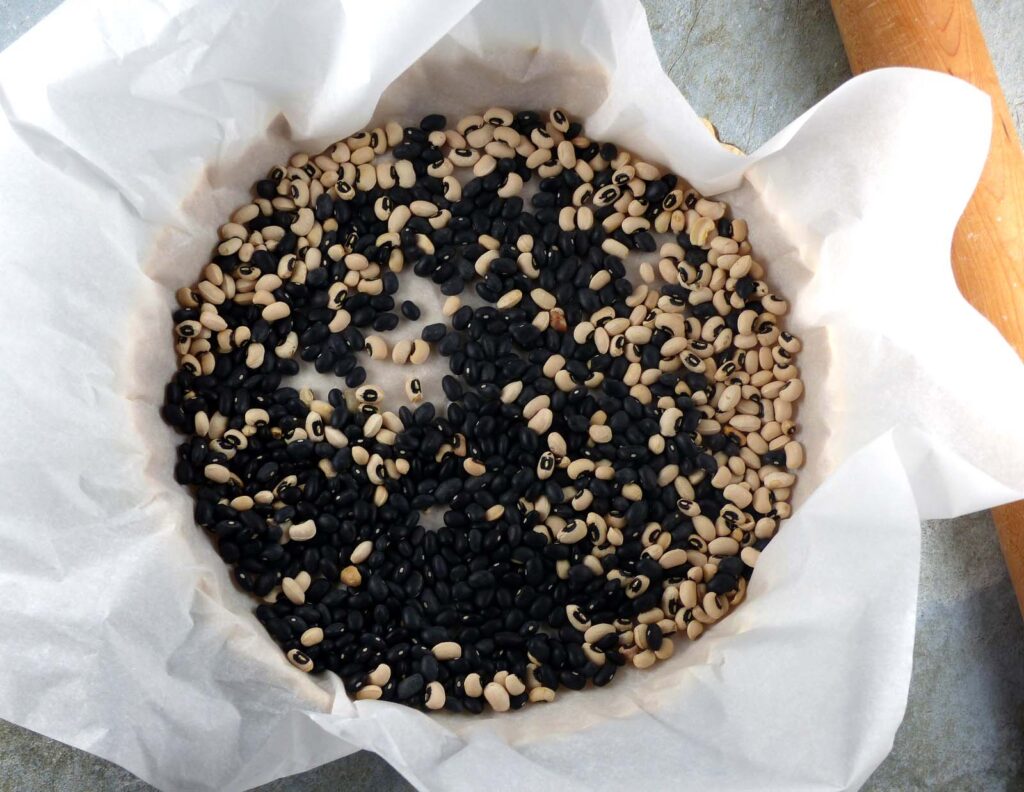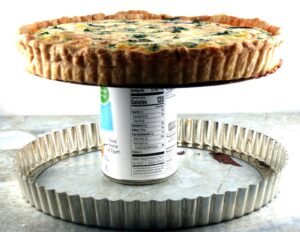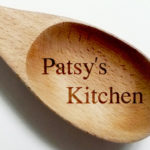During the 1970s, quiche became hugely popular in North America. But sometime in the ’90s, its popularity waned. Perhaps concerns about cholesterol and eggs contributed to quiche’s fall from grace. And perhaps, with their soggy crusts and rubbery custards, North American quiches bore little resemblance to their French counterparts.
But quiche is back! It is the perfect dish to serve for brunch, lunch, or a light supper. It also travels and reheats well, so it makes a worthy contribution to a potluck. Recently, I rediscovered my love for quiche at the exquisite Montreal pâtisserie Au Kouing-Amann in the Plateau neighborhood. In addition to the signature pastry kouign amann (a sort of caramelized croissant from Brittany) and amazing croissants, the bakery serves quiche—and what a quiche! The crisp buttery crust and silky custard are what dreams are made of. This pâtisserie alone is worth the trip to Montreal!
(Kouign amann is a Breton word meaning “butter cake.” The most common spelling is kouign amann, but sometimes you see it spelled kouing amann, as in the name of the patisserie.)
The quiche at Au Kouing-Amann inspired me to fine-tune my own quiche recipe. While there are several steps, it is not difficult to make a great quiche at home. It is definitely worth taking the time to make a homemade butter crust—it is so much better than a purchased crust. Sure, it takes a little time, but the crust can be rolled out and stored in the freezer for up to one week prior to baking.
Blind baking, which means partially baking the crust before adding the filling, is an important step to ensure a crisp crust. To prevent the crust from puffing up during blind baking, weigh it down with a piece of parchment paper that you fill with dried beans or rice. You can even purchase ceramic or stainless-steel pie weights for this purpose, but I have never found it necessary to buy them. I keep a jar of aged, dried beans in my pantry for this purpose.
Making the custard is a simple matter of whisking together eggs and light cream. There are myriad possibilities for filling ingredients. Just about any vegetable can be added to a quiche; cook the vegetables first to tenderize them and release excess moisture. Ham, bacon, or cooked sausage adds a savory note. While I am partial to nutty Gruyère cheese, you can certainly use Cheddar, pepper Jack, goat cheese, feta, or blue cheese, depending on the vegetables or meat you choose. The recipes that follow are two of my favorites. The custard in the spinach and mushroom quiche is delicately seasoned with a whisper of nutmeg, while the leek and bacon variation gets a lift from fresh chives.
So, just in time for spring brunches and celebrations, here is my recipe for classic quiche. You can customize the filling according to your taste. Profitez-en!
Equipment: A 10-inch removable-bottom fluted tart pan, ceramic quiche dish, or 9-inch glass pie pan
Ingredients
Crust:
1 large egg yolk
1 teaspoon lemon juice
Ice water
1½ cups all-purpose flour, plus more for dusting and rolling
½ teaspoon fine salt (see Tip)
3 ounces chilled butter (6 tablespoons), cut into small pieces
2 tablespoons (1 ounce) shortening, cut into small pieces
Filling:
8 cups baby spinach, stems trimmed, washed and dried
1 tablespoon extra-virgin olive oil
8 ounces baby bella, cremini, or button mushrooms, stem ends trimmed, caps wiped clean, sliced (3 cups)
2 medium shallots, finely chopped (1/2 cup)
3 large eggs
1 cup light cream
½ teaspoon Morton kosher salt (see Tip)
Freshly ground pepper to taste
Pinch of nutmeg, preferably freshly grated
1 cup shredded Gruyère cheese, divided
Preparation
1. To prepare the crust: Blend the egg yolk and lemon juice with a fork in a 1-cup liquid measure. Add enough ice water to measure ½ cup; stir to blend. Set aside in the refrigerator. Whisk the flour and fine salt in a large bowl. Add the butter and shortening. Using a pastry blender or two knives, cut in the butter and shortening until the mixture resembles fine crumbs with a few larger pieces. Finish blending the flour and fat with your fingertips. While stirring with a fork, drizzle in just enough of the egg yolk mixture to evenly moisten the flour mixture. (Most likely you will not use all of it.) Press the mixture into a mass and turn it out onto a lightly floured clean surface. With the heel of your hand, smear the dough away from you several times to help distribute the butter. (This technique is called fraisage in French.) Press the dough into a disk, wrap in plastic wrap and refrigerate for at least 30 minutes or up to 3 days.
2. If the dough has been refrigerated for more than 2 hours, let it stand at room temperature for 15 minutes. Lightly oil a 10-inch removable-bottom fluted tart pan, ceramic quiche pan, or 9-inch glass pie pan. On a lightly floured surface and using a lightly floured rolling pin, roll the dough into a 14-inch circle slightly less than ¼-inch thick. As you roll, lift and move the dough often to make sure there is enough flour on the work surface to prevent sticking. Brush excess flour off the top with a pastry brush. Roll the dough back over the rolling pin, brushing off any excess flour from the underside as you roll.
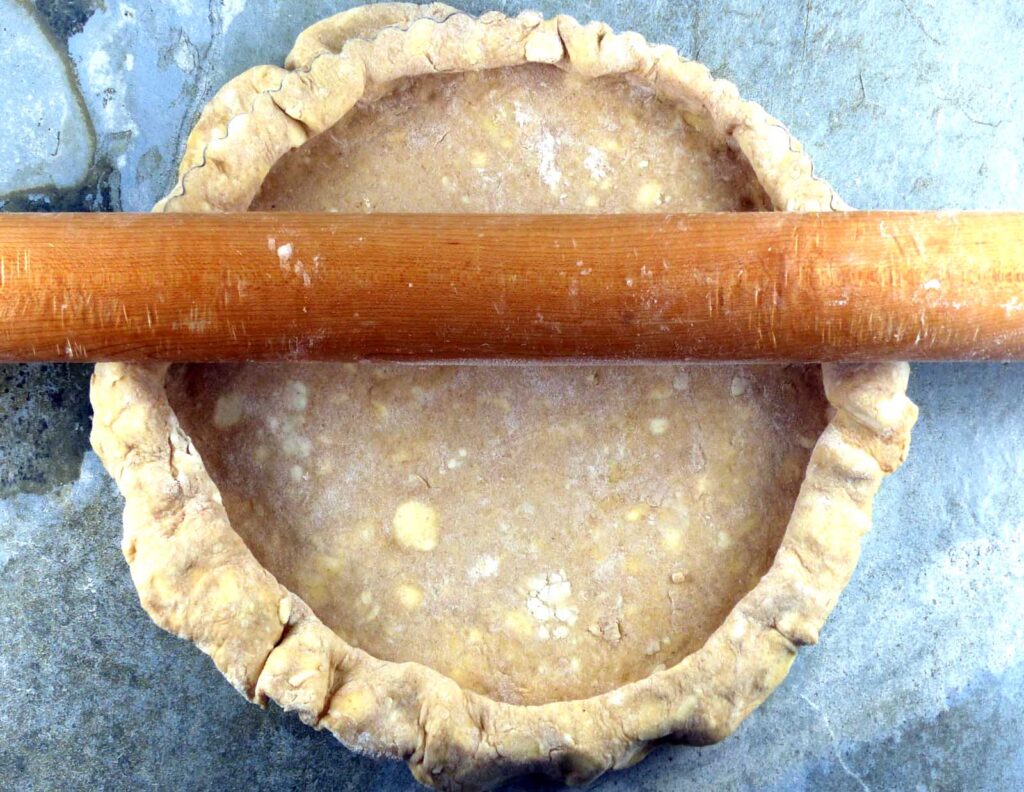
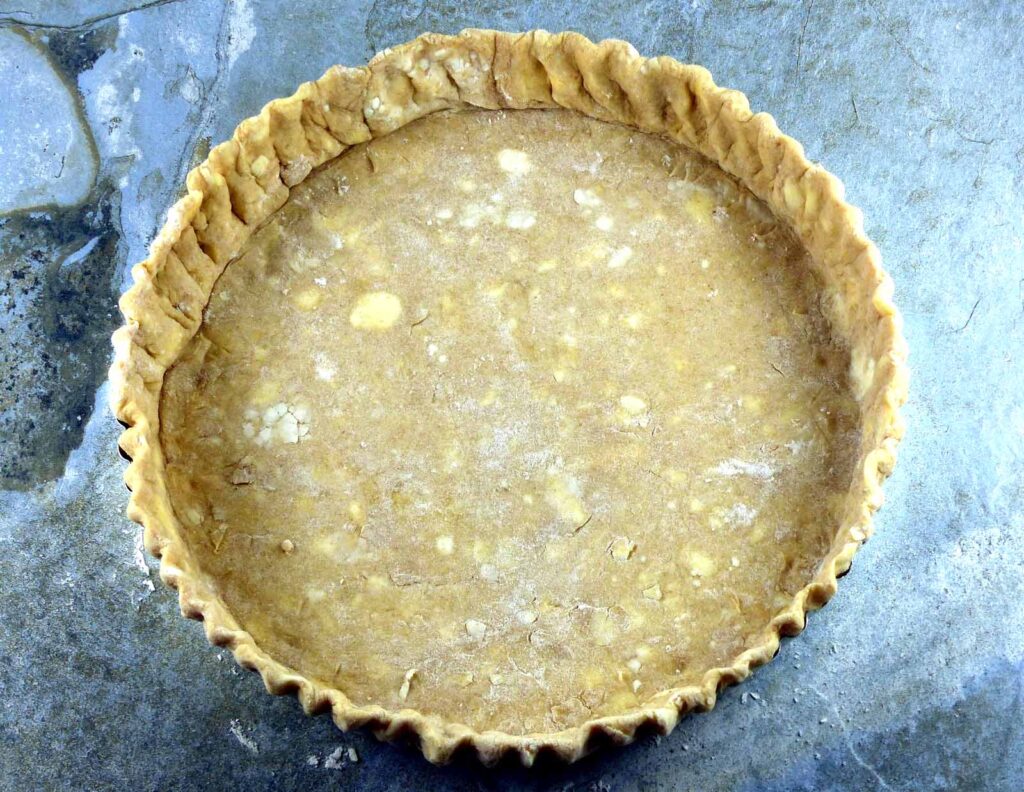
Position the rolling pin over one edge of the prepared pan so that the overhang will be uniform all around. Slowly unroll, letting the dough fall gently into the pan. Working your way around the perimeter, lift the overhang with one hand while you gently press the dough into the bottom and sides of the pan with your other hand. If using a removable-bottom tart pan, roll the rolling pin over the top of the pan to cut off excess dough. Press the dough into the hollows of the rim with your finger to set the shape. Crimp the edges with your thumb and index finger. If using a quiche dish or pie pan, use kitchen scissors to trim the crust, leaving a ¾-inch overhang. Fold the dough under to make a rim around the edges of the pan. Crimp the rim of the crust decoratively with your thumb and index finger or a fork. Cover the pan with plastic wrap and freeze for at least 30 minutes or refrigerate for at least 1 hour. (You can freeze the unbaked crust for up to 1 week.)
3. To blind bake the crust: Preheat oven to 375°F. Cut a square of parchment paper that is at least 2 inches larger than the diameter of the pan. Crumple the paper, then press it flat. Line the crust with the paper and press it into the edges of the pan. Add enough pie weights (dried beans, rice, or commercial pie weights) to cover the bottom evenly. Set the pan on a rimmed baking sheet. Bake the crust for 20 minutes. Carefully lift and remove the paper and pie weights. Return the crust to the oven and bake until the edges are light golden and the bottom has set, about 10 minutes. Let cool on a rack.
4. Meanwhile to prepare the filling: Fill a large pot with about 1 inch of water and bring to a boil. Gradually stir in the spinach. Cook until the spinach has wilted, about 1 minute. Drain in a fine sieve and refresh under cold running water. Thoroughly squeeze out as much moisture as possible. Chop the spinach coarsely. The volume of spinach will have reduced to about ½ cup!
5. Heat the oil in a large skillet over medium-high heat. Add the mushrooms and cook, shaking the pan and tossing or stirring from time to time, until lightly browned and tender, 4 to 6 minutes. Add the shallots and cook, stirring, for 1 minute. Transfer the mushrooms and shallots to a plate and let cool.
6. Whisk the eggs in a medium bowl until blended. Gently whisk in the cream. Add the kosher salt, pepper, and nutmeg.
7. To assemble and bake the quiche: Place the pan on the rimmed baking sheet. Sprinkle about ½ cup of the cheese over the pre-baked crust. Scatter the mushrooms and shallots over the top. Strew the spinach over the mushrooms. Sprinkle the remaining cheese over the top. Gently re-whisk the custard, and slowly pour it into the crust.
8. Bake the quiche at 375°F until the custard has set and the top is starting to turn golden, 35 to 45 minutes. Keep an eye on the quiche as it bakes. If the edges of the crust are browning too quickly, shield them with strips of aluminum foil. Let the quiche cool for about 10 minutes before slicing.
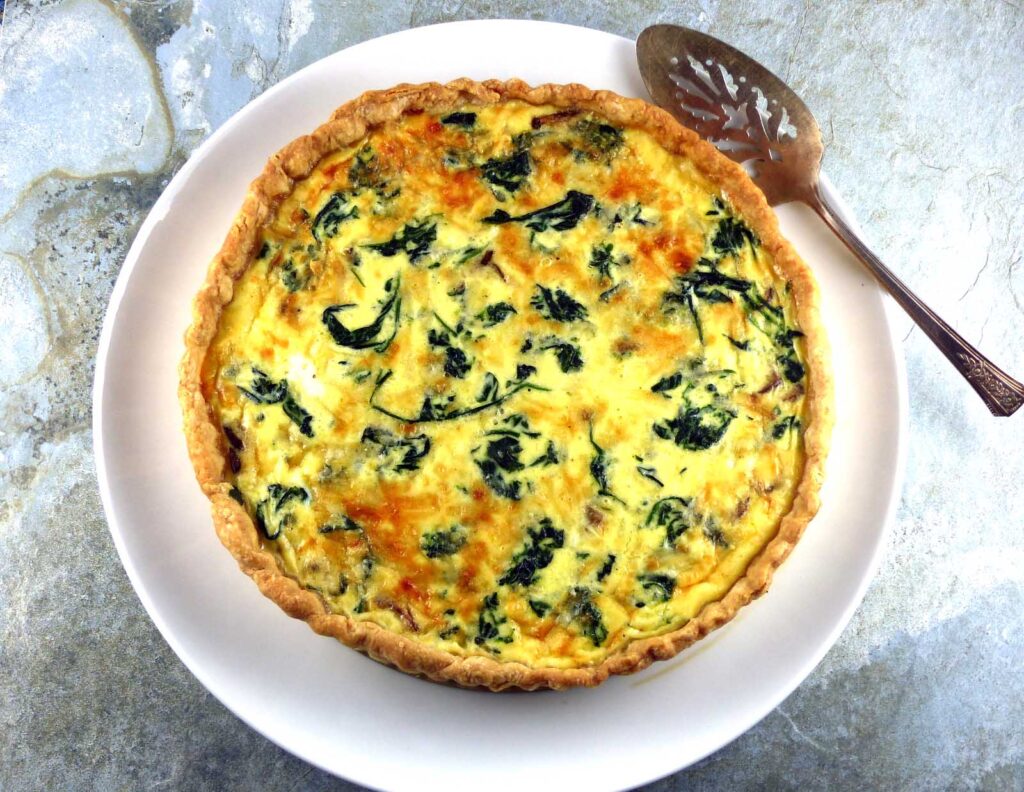
Makes 1 quiche, 8 slices.
Variation: Leek and Bacon Quiche: Omit the spinach, mushrooms, and shallots. In Steps 4 and 5, heat 1 tablespoon extra-virgin olive oil in a medium skillet over medium-low heat. Add 1¾ cups sliced cleaned leeks (3 medium, white and pale green parts only) and a pinch of kosher salt. Cook, stirring often, until the leeks start to sizzle, about 1 minute. Cover the pan and cook, stirring often, until the leeks are tender, 10 to 15 minutes. (Reduce the heat if necessary if the leeks are browning too quickly.) Remove the lid and cook, stirring often, to evaporate excess moisture, 3 to 5 minutes. In Step 6, make the custard with 3 eggs, 1 cup light cream, ¼ teaspoon Morton kosher salt, and ground pepper to taste. In Step 7, sprinkle about 1/2 cup shredded Gruyère cheese over the pre-baked crust. Scatter the leeks over the cheese. Crumble 2 slices cooked bacon over the leeks and sprinkle with 2 tablespoons chopped fresh chives. Add the remaining ½ cup cheese. Pour in the custard. Bake the quiche as directed in Step 8.
Tip: Measuring salt: Even though all salts consist primarily of sodium chloride, the size and shape of the crystals can differ significantly and affect the saltiness of the result. When measured by volume, finely granulated salts, such as table salt and fine sea salt, will have a much saltier taste than the more coarsely granulated kosher salt or sea salt. I use fine salt in baking because the small even crystals are evenly distributed in a batter or dough. For general cooking, I prefer kosher salt, which has a coarser granulation. It is easy pick the granules up between your fingers and sprinkle it into the food you are seasoning. Note that there are two common brands of kosher salt in supermarkets: Diamond Crystal and Morton. Diamond Crystal has larger crystals and a fluffier texture than Morton’s. Therefore, teaspoon for teaspoon, Morton’s kosher salt is considerably saltier than Diamond Crystal. I tested these quiche recipes using fine salt in the crust, and Morton’s kosher salt in the custard. If you have Diamond Crystal kosher salt on hand, use about ¾ teaspoon in the custard. And beware: If a recipe calls for kosher salt, do not substitute the same volume of fine salt. The result will be far too salty!
Tip: Removing the sides from a removable-bottom tart pan. Use a skewer to loosen the crust from the pan’s edges. Place the pan on a can. Let go of the sides. They should fall onto the counter, leaving the tart on the base. Use a large metal spatula to carefully transfer the quiche to a serving platter.
Make-ahead: You can spread the preparation over several days. Make the pastry ahead of time and refrigerate it for up to 3 days. Once the pastry is rolled out and fitted into the pan, you can freeze it for up to 1 week. Even though quiche served fresh from the oven (but cooled slightly) is a treat, it is not always convenient. Fortunately, you can refrigerate the cooked quiche for up to 3 days and reheat it in a 350°F oven for 20 to 30 minutes. You can also reheat individual slices in the oven. Whatever you do, please do not microwave leftover quiche. The microwave turns the crust into soggy cardboard and toughens the delicate custard.
—Patsy Jamieson
